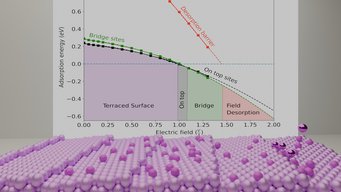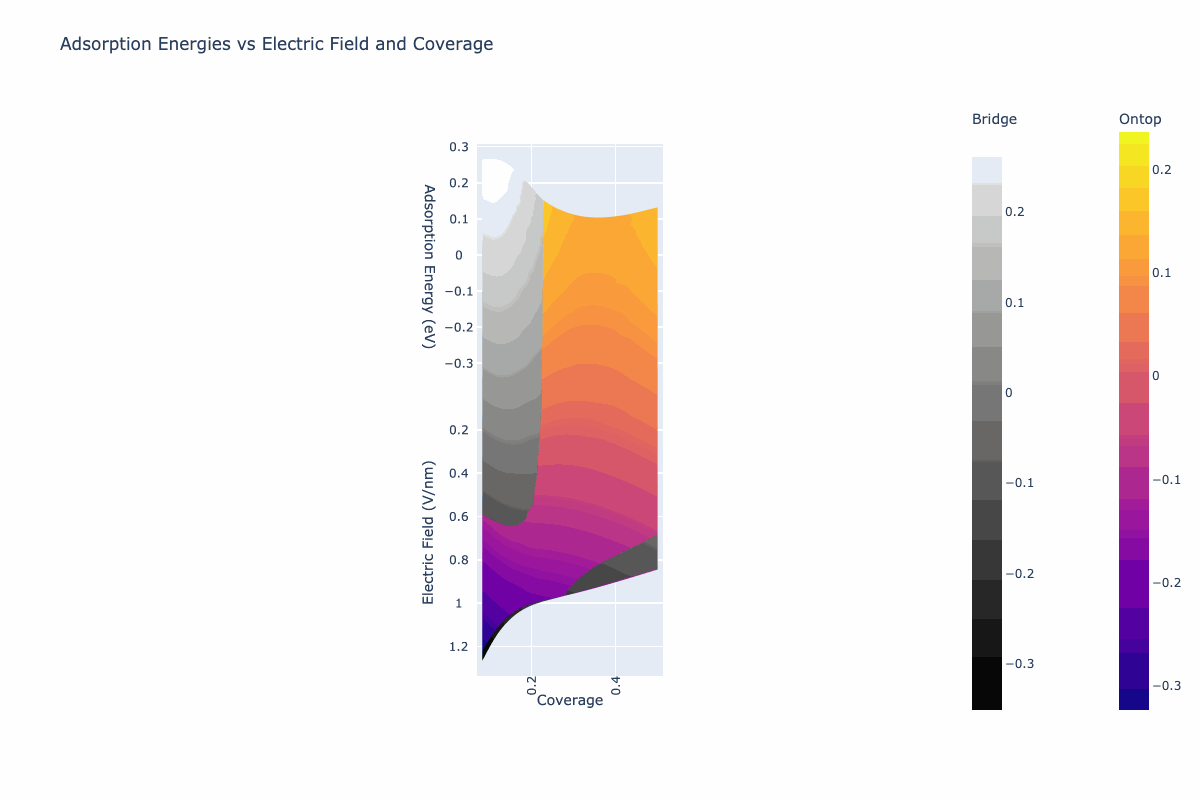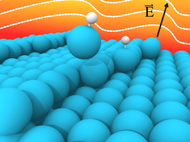
Surface Phase Diagrams for Field Evaporation
The intense electric fields such as those used in atom probe tomography (APT) can be treated as a degree of freedom for stability of different surface phases of metal. Through density functional theory (DFT) calculations on the Li (110) surface, we identify a critical field strength at which kink sites spontaneously dissolve into mobile adatom states, also enabling barrier-free diffusion across the surface. This suggests the emergence of a fluid-like, 2D adatom gas phase on lithium surfaces under high fields, even at cryogenic temperatures. This phase transition, driven by electrostatic field effects, provides a theoretical framework to explain experimental observations.
Electric fields of magnitudes 106-1010 V/m when applied on materials can often give rise to a myriad of interesting phenomena. These phenomena are used as basis for characterization routines such as APT and field ion microscopy (FIM). This project especially deals with the effect of electric field on the stability of various adsorption sites, kink structures and diffusion barriers.
First we looked at Li, as it plays a vital role in modern technology due to its unique properties and applications under high electric fields. As the primary charge carrier in lithium-ion batteries, Li is essential for scalable energy storage solutions, powering devices from portable electronics to electric vehicles, and supporting renewable energy integration. However, Li-ion batteries face challenges like dendrite formation—needle-like Li deposits that can cause short circuits and reduce battery life. Electric fields, reaching 10⁶–10⁷ V/m, significantly influence dendrite growth. Additionally, Li’s low melting point makes it suitable for liquid metal ion sources in focused ion beam (FIB) systems, which are crucial for nanoscale imaging and semiconductor fabrication.
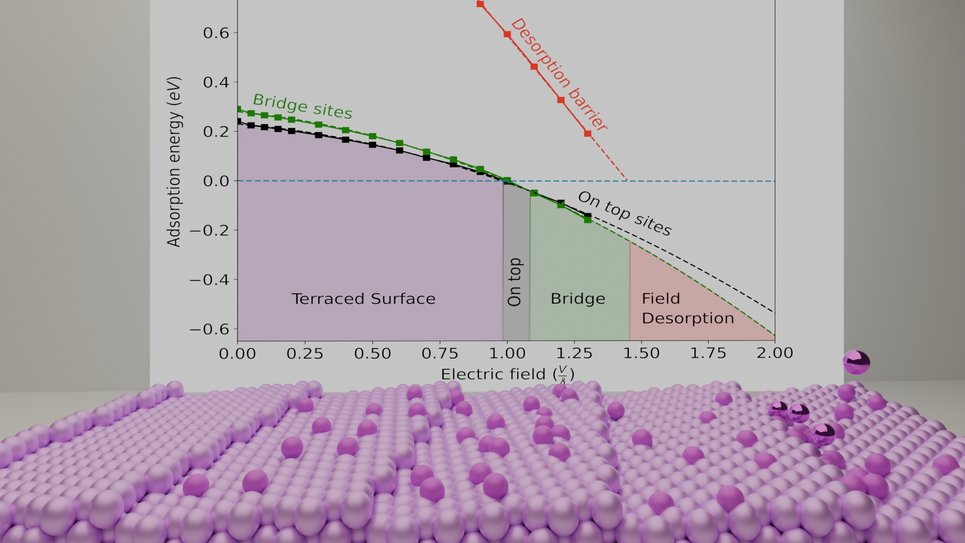
In this project, we modeled a bcc Li (110) surface to investigate the effects of high electrostatic fields on its structural and electronic properties. Using advanced DFT calculations with precise convergence criteria, we explored how electric fields influence charge redistribution, bond strength, and induce tensile stresses (Maxwell stress) on the Li surface. To understand how electric fields manipulate surface phases, we calculated the adsorption surface phase diagram by determining the self-adsorption energy of Li adatoms at different field strengths. This involved evaluating the total energies of the clean surface, Li-adatom configurations, and reference states, with adsorption energies mapped across varying electric fields to reveal phase stability and preferred adsorption sites. Together with the adsorption energies variation, the desorption barriers are also calculated as developed in Field-Controlled Evaporation Mechanisms for Surface Atoms project. This explains the heterogenous field evaporation behaviour of pure Li when characterized using APT. A thermodynamically spontaneous dissolution of kink/stepped surfaces to adsorbed sites can occur at electric field strengths, which are below the threshold required for field desorption of the adsorbed sites.
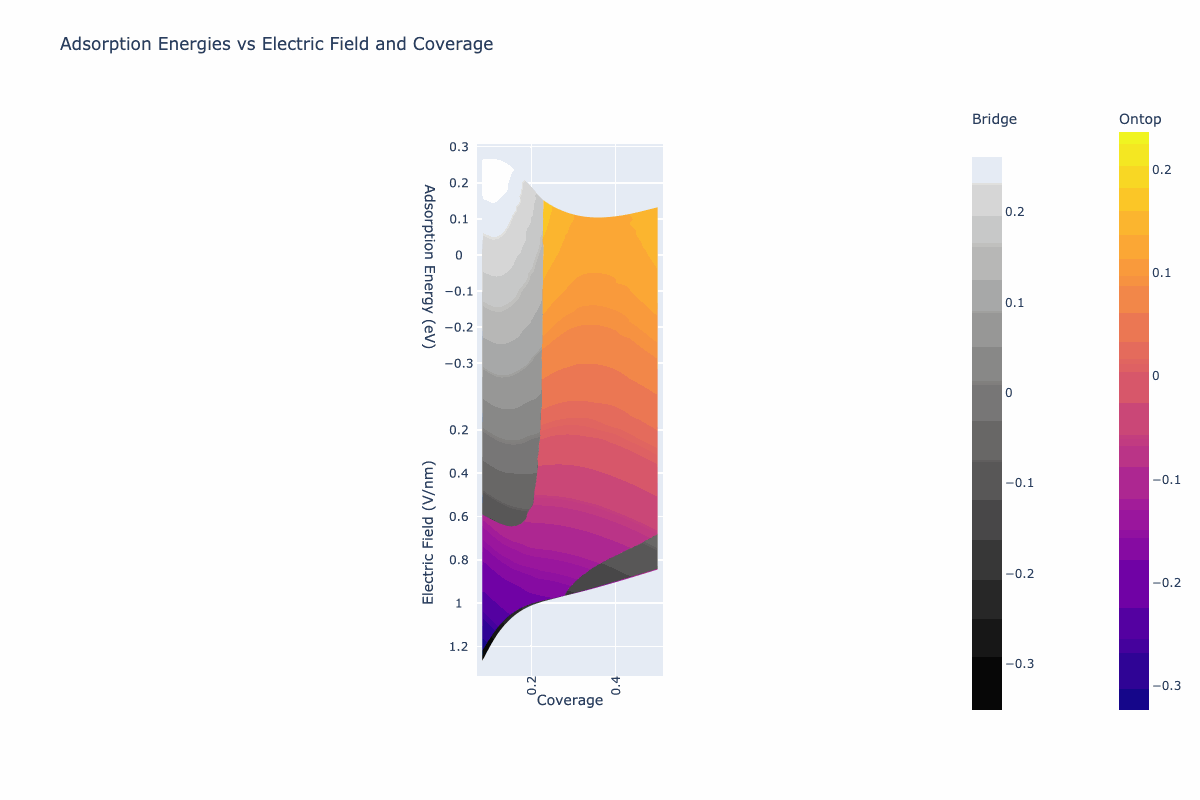
In this project, we also evaluated the diffusion barrier from the across the two favoured adsorption sites as a function of electric field. The electric field switches the stable adsorbed site from ontop to bridge, with electric field. At a critical electric field of 1.1 x 1010 V/m, the two sites are energetically degenerate. the diffusion barriers also disappear at this electric field, giving rise to a surface bound 2D adatom gas, which is more stable than the terraced surface. The stable concentrations of this 2D adatom gas and the critical electric fields were calculated, using a surface phase diagram with additional conventional degree of freedom which is the coverage or the concentration of adatoms on the surface.
These surface phase diagrams for field evaporation are useful tools not only for aiding the characterization ttechniques such as APT, but also for mitigating dendride fromation in batteries. Further such surface phase diagrams including electric field are currently being evaluated for Pt, with H adsorption sites. A systematic evaluation of these phase diagrams, would be critical for understanding the aberrations in APT, for catalytical applications, engineering better battery materials and developing liquid metal ion sources.
More projects from this group.
